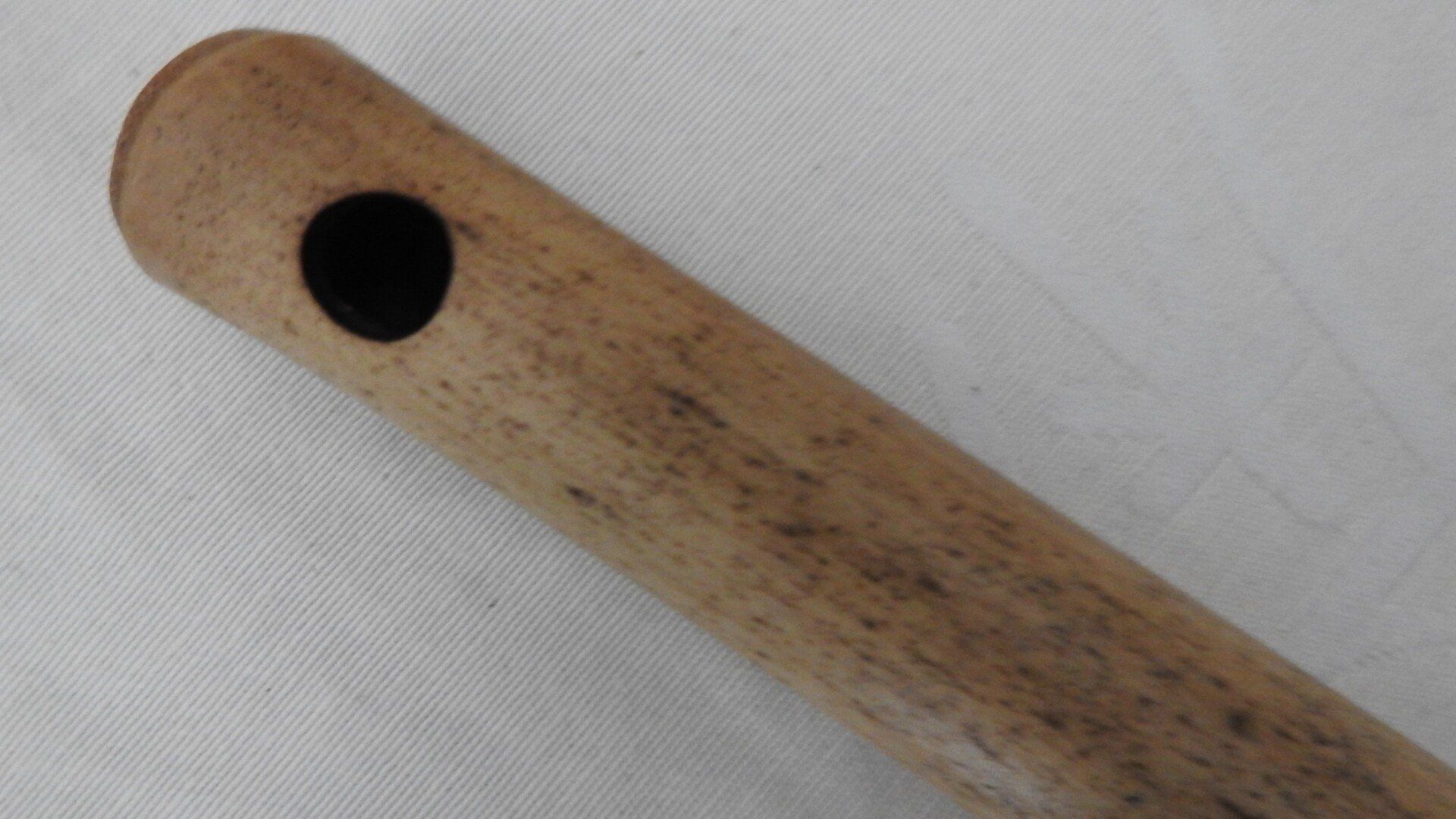Erik the flute maker
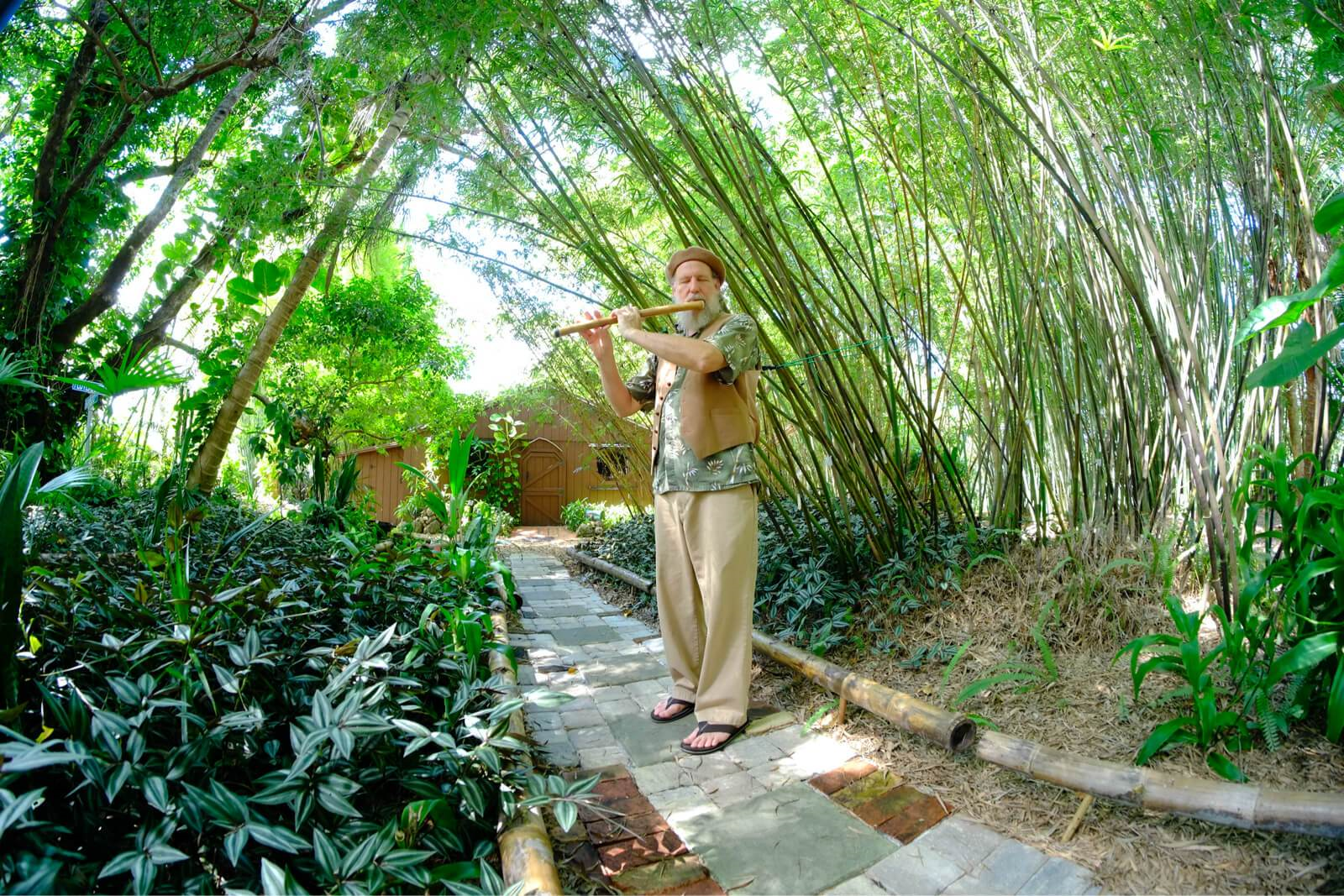
Bamboo
Erik has been making bamboo flutes for 50 years in addition to his flutes from other materials.
Erik says on his website: He decided to settle in Florida because of the large bamboo from which flutes are made, called Bambusa Multiplex, which grew in southern China and Japan. The bamboo arrived by steamship from Yokohama to San Francisco and came to the by train to Florida in the mid-1880's where it settled in the subtropical gardens of pioneer gardeners and then the earliest plant nurseries that spread the bamboo around Florida.
Nr. 051 Guena
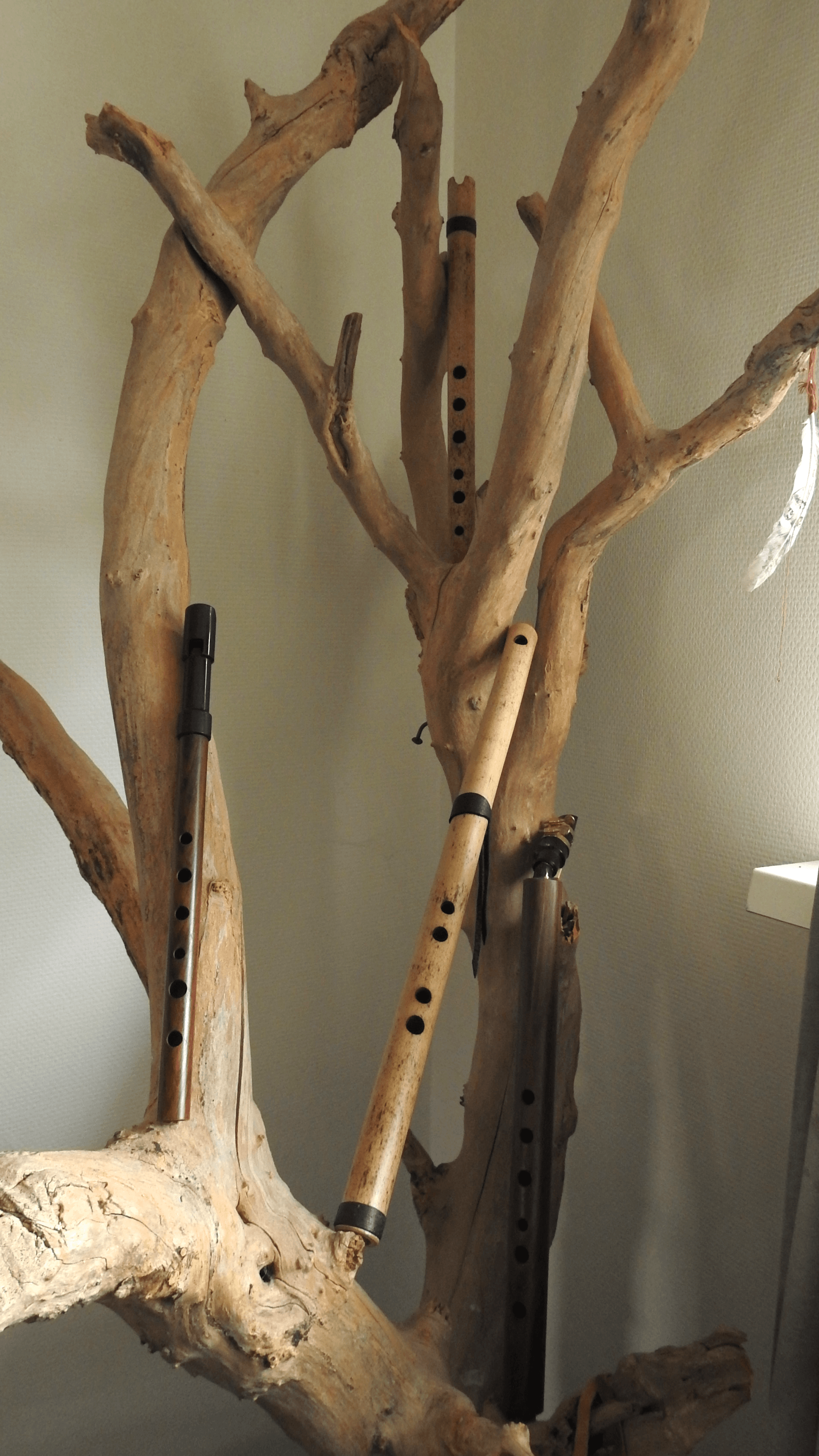
The Guena is used in traditional music in the Andes. The instrument is usually made of wood or bamboo. It is open on both sides and has six finger holes and a thumb hole. To produce sound, the player closes the top opening with the skin between the lower lip and the chin. He then blows over the oval-shaped recess in the rim of the cylinder. The quena is usually tuned in G, with G also being the tone that sounds when all the holes are closed. The sound of the quena is recognizable by the murmur and the breathing sound. The quenacho is a larger, lower-tuned version of the quena and is made and played in the same way. This instrument is tuned in. The quena is used in traditional music in the Andes.
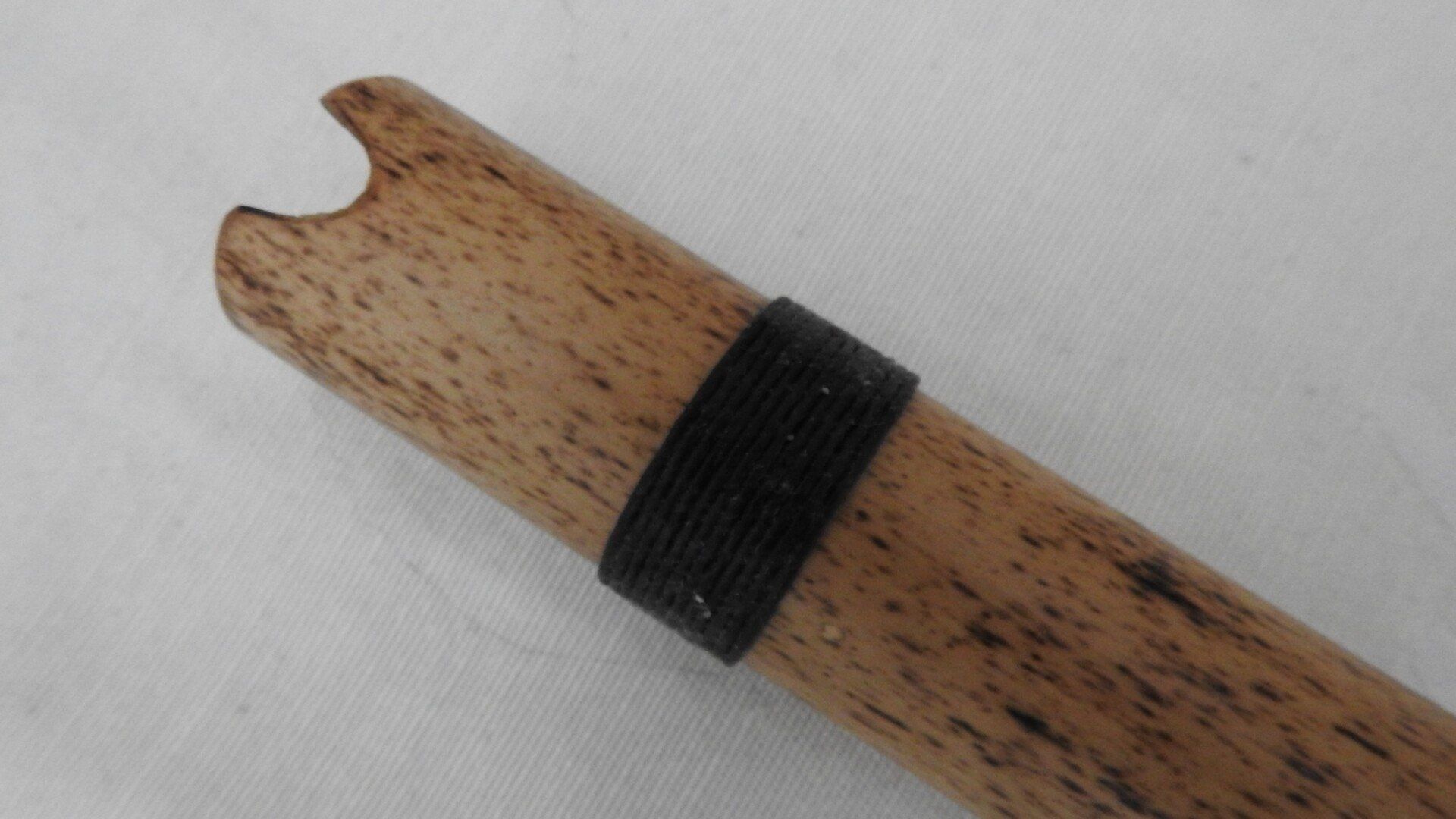
The flute is not as easy to play as the Indian flute
I'm still practicing and as soon as I get a good sound out of it I'll post a sound clip.
No indian style flutes 2017 Nr 048 D sax Nr. 049 flute No. 050 Penny Wistle
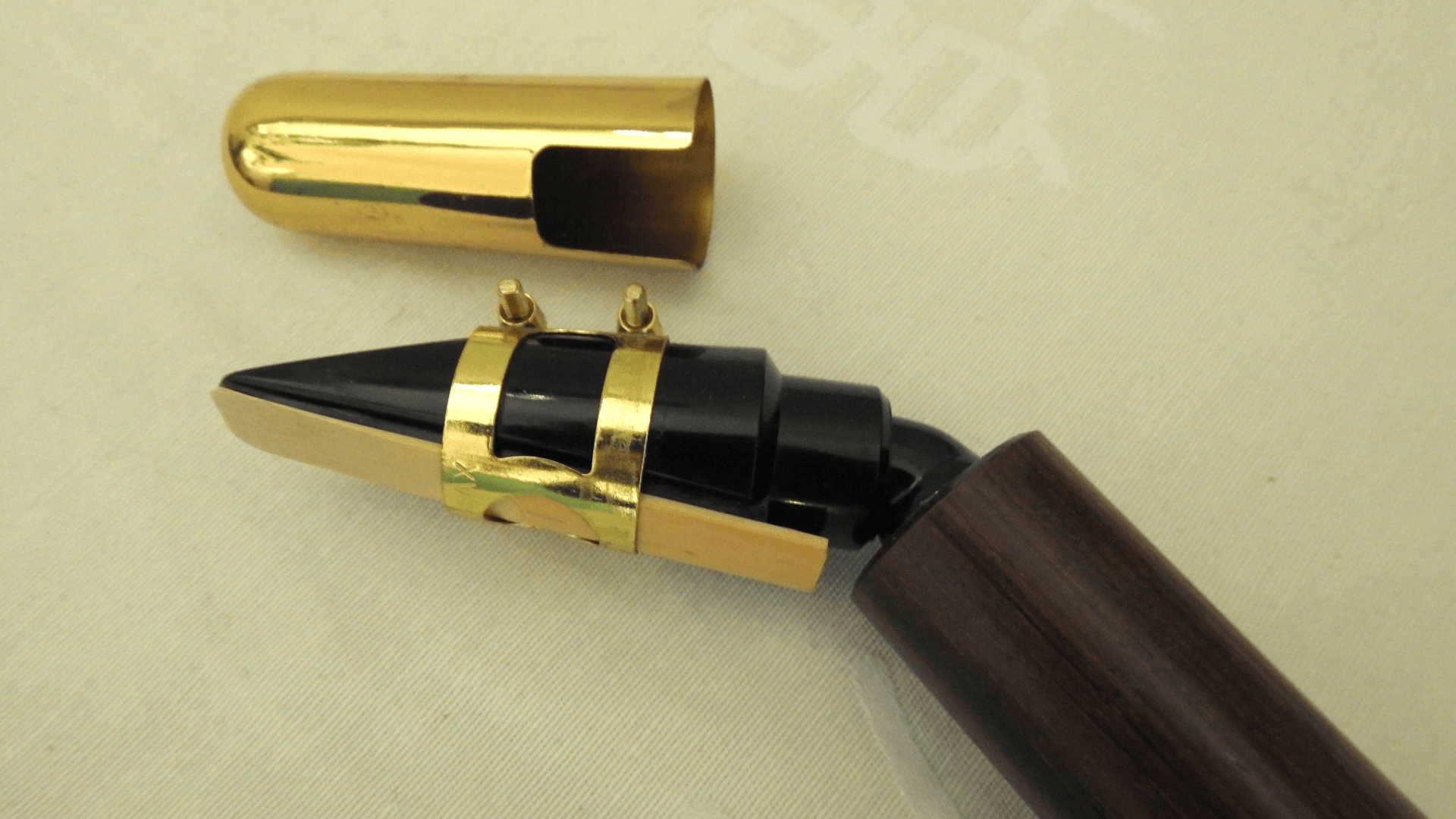
This wooden D sax
is also not easy to play compared to the Native American style flute. I'm still wrestling with it.
It is made from Cocobolo which is a tropical hardwood from Central American trees belonging to the genus Dalbergia. Only the heartwood of cocobolo is used; it is usually orange or reddish brown, often with dark irregular spurs that weave through the wood. The heartwood changes color after being cut and can be polished to a glossy, glass-like finish; because it is quite dense, sometimes with a specific gravity of more than 1.0, it will sink in water. The sapwood (not often used) is cream yellow, with a sharp boundary between it and the heartwood.

